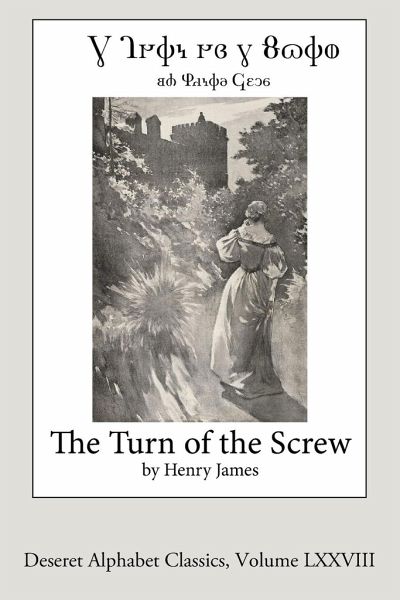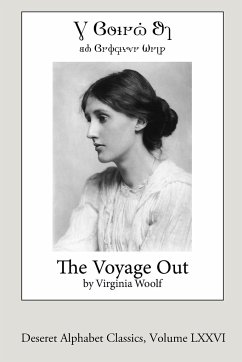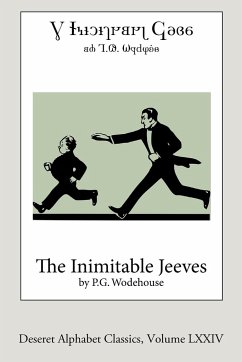
The Turn of the Screw (Deseret Alphabet edition)
Versandkostenfrei!
Versandfertig in 1-2 Wochen
13,99 €
inkl. MwSt.

PAYBACK Punkte
7 °P sammeln!
Henry James (1843-1916) was an American author who spent nearly half of his life as an expatriate in Europe and became a British citizen in 1915. Many of his works, such as "Daisy Miller," deal with the contrast and conflict between brash Americans and dignified Europeans. James is considered one of the key figures in the development of literary modernism. "The Turn of the Screw" is the most famous of James' many horror stories. Although it deals with ghosts, James leaves open the question of whether the ghosts are real or merely the product of the narrator's over-active imagination. While cri...
Henry James (1843-1916) was an American author who spent nearly half of his life as an expatriate in Europe and became a British citizen in 1915. Many of his works, such as "Daisy Miller," deal with the contrast and conflict between brash Americans and dignified Europeans. James is considered one of the key figures in the development of literary modernism. "The Turn of the Screw" is the most famous of James' many horror stories. Although it deals with ghosts, James leaves open the question of whether the ghosts are real or merely the product of the narrator's over-active imagination. While critics have argued both ways for over a century, readers have continued to be spooked by the dangerous figures of Miss Jessel and the sinister Peter Quint. This book is in the Deseret Alphabet, a phonetic alphabet for writing English developed in the mid-19th century at the University of Deseret (now the University of Utah).















